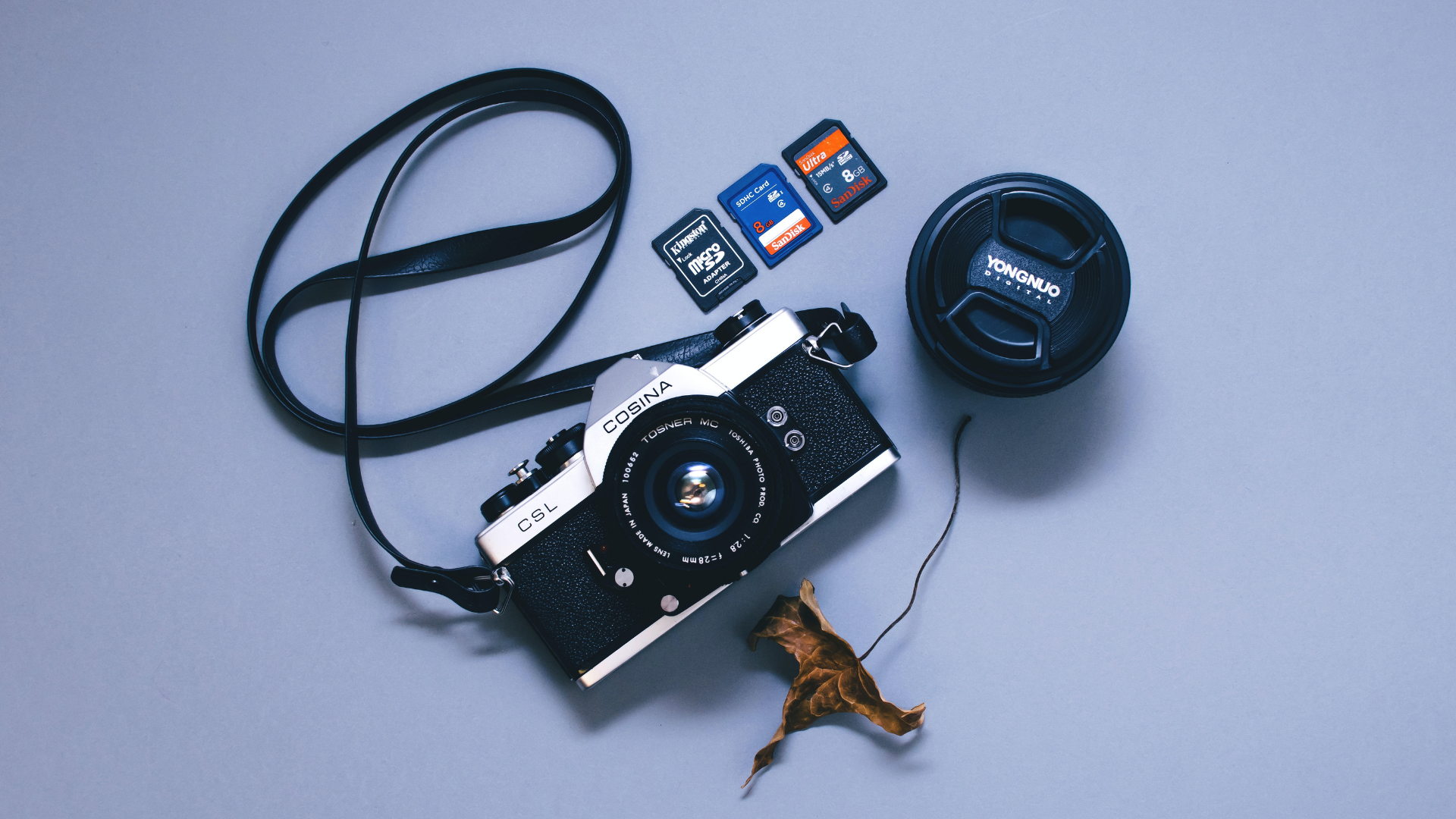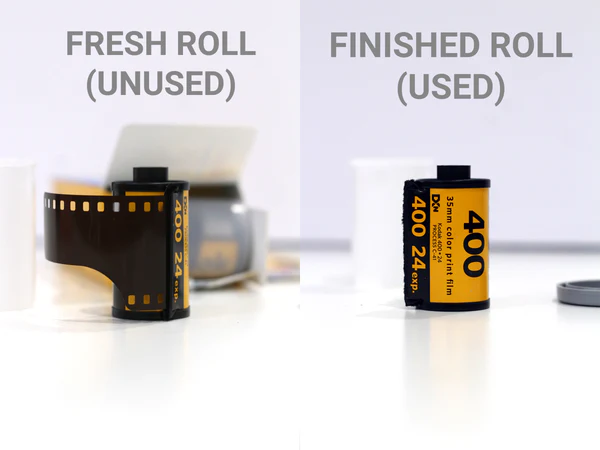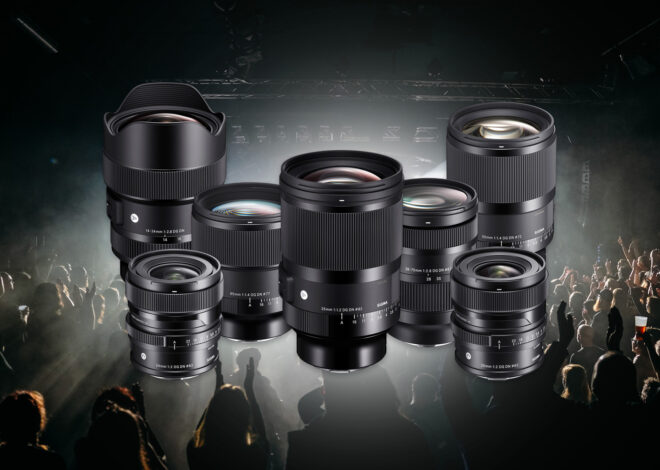
Which Lenses are Best for Hasselblad 500C/M in 2024?
As an Amazon Associate, I earn from qualifying purchases.
Which Lenses are Best for Hasselblad 500C/M
Hasselblad 500 C/M is a studio camera for professional indoor photography. The main camera came out in 1957 and since then the camera gets upgraded every year.
Since Hasselblad lenses have been produced since the 1960s, it’s not strange that customers get confused. As Hasselblad has some series of cameras and lenses, this is legitimate to get confusing.
This is why this article will tell you about the best Hasselblad 500CM lenses you will find in the market. Some of the lenses are off-brand and very optimistic in terms of performance.
Best Lenses For Hasselblad 500CM:
| Lenses | Type |
| 1. ZEISS Planar 80mm f/2.8 | All-in-one Lens |
| 2. ZEISS Distagon T* f/4-50mm | Prime Lens |
| 3. ZEISS Distagon f/3.5 60mm | Wide Angle Lens |
| 4. Carl ZEISS 150mm Sonnar C | Telephoto Lens for portraits |
| 5. Carl ZEISS Distagon 40mm f/4 T CF FLE | Prime Lens |
| 6. Carl ZEISS Tele-Tessar f/5.6 | Tele Photo Lens |
| 7. CARL ZEISS Distagon 30mm f/3.5 | Ultra wide angle Lens |
Hasselblad 500C/M is a decade old camera. It is a film camera passed on over years. So the lens choice is very minimal here.
The modern era doesn’t make film cameras anymore. And films are been using the camera as rapidly going to extinction.
But there are some film manufacturers who still produce negative films to keep Film Photography alive.
I have gathered some lenses that are best fit for the Hasselblad 500C/M. And I will choose one for you and guide you to choose the best Hasselblad 500CM lenses.
Things to mention, the term “T*” (pronounced as T-Star) refers in general to all Carl Zeiss lenses with multi-coating. There is no particular difference between C and T* lenses.
Anyway, the individual review on the lenses are down below:
1. ZEISS Planar 80mm f/2.8

Specs:
- Focal length: 80mm
- Aperture: F/2.8
- Maximum Format: Medium Format 6X6
- Mount and Flange focal Distance: Hasselblad V
- Lens Construction: 7 elements and 5 groups
- Diaphragm Type: Automatic
- Aperture Control: Aperture Ring
- Number of Blades: 5
- Built-in leaf shutter type: Mechanical Prontor
- Build In leaf shutter speed: 1-1/500
- Closest focusing Distance: 0.9m
- Closest working: 0.8
- Maximum magnification ratio: 1:9 at the closed focusing distance
- Focusing modes: Manual focus only
- Manual focus control: Focusing ring
- The angle of view: 18 degrees diagonal and 13 degrees horizontal
- Weight: 510g
- Maximum Diameter X Length: 83 X 59 mm
The Planar is kind of a standard lens for the Hasselblad 500C/M. People with a camera have to own the lens for its versatile use and the magnificence of picture quality.
The lens delivers a very sharp image and the apertures are great. The one feature that some people could find unattractive is the lock that connects shutter speeds and apertures to a particular EV value. But what do you expect from more than 6 decades-old cameras? Right?
The famous photograph of history, Buzz Aldrin inside the LEM during the lunar descent on 20 July 1969 was taken from this lens.

The lens has a very strong history in the past. This is one of the two most classic Hasselblad lenses.
With this lens, the iconic images of the Earth moving above the lunar surface are captured. These 80mm lenses were the main lenses used on most lunar missions.
The lens has two variants now. There are more based on cosmetic variations. But the optics never changed.
The T* multicoating was added in 1970 and the simpler one was released in 1957. The T* multicoating is purely for marketing purposes; it doesn’t significantly increase contrast or color. Cosmetics, shutters, and filter sizes have changed over time.
This lens is very well suited for landscape and cityscape photography. The 80mm focal length got you covered in portrait photography as well.
The Planar is the most successful camera lens designer in the early stage of photography art. The Planar 80mm is no exception from it. The lens with the Hasselblad 500 C/M gives a very high-quality image with good dynamic range and sharpness.
The lens is discontinued in 2013 with the end of the V system. The camera I am talking about in this article, the Hasselblad 500C/M is one of the V series cameras from Hasselblad.
2. ZEISS Distagon T* 50mm f/4

Specs:
- Mount: Hasselblad Mount
- Focal Length: 52mm
- Maximum Aperture: F 4
- Series: ZEISS Distagon T*
- Focus Type: Fixed, Manual
- Weight: 340g
- Minimum Aperture: 32
- Number of Elements: 9
- Number of Groups: 9
- Shutter: Proton CF
- Filter Connection: Bayonet for Hasselblad series 93
- Reproduction Ratio: 0 to 1:6.3
The ZEISS Distagon T* 50 mm f/4 is a wide-angle camera lens. It captures images with very good clarity and sharpness. With a 1-1/500th sec shutter speed, the inbuilt leaf shutter in this Hasselblad camera lens allows you to capture fast-moving scenes with greater resolution and detail.
This Hasselblad 60mm filter offers many aesthetic effects in addition to protecting the lens surface from scratches. The lens is a prime lens and the lens has a fixed focal length.
The ZEISS Distagon T* 50mm f/4 is a perfect lens for shooting street photos and sceneries.
The Distagon 50mm is a very lightweight lens and very small compared to the other lenses. The floating lens elements technology got significantly improved which maintains excellent image quality.
The two focusing rings on this lens are similar to those on the 40 mm Distagon T* f/4 lens.
Watch this video to have a clear idea about the Zeiss Distagon 50mm lens with the Hasselblad 500 C/M.
One important thing to mention, as the lens is out of production, consider checking thoroughly the lens first before buying it.
3. ZEISS Distagon f/3.5 60mm

Specs:
- Focal Length: 60mm
- The angle of View: 66 Degrees
- Minimal Focus Distance: 0.6m
- Weight: 680g
- Number of Lens elements: 7
- Number of components: 7
- Mount: Compur interchangeable reflex shutter size 0 with an automatic iris diaphragm.
- Filter mounting: Adapter ring for Hasselblad
It is an incomprehensible lens among others. The other lens might have long and good history but the Zeis Distagon f/3.5 would be the one lens every Hasselblad 500 C/M user will look for.
It is a wide-angle lens with a very fast shutter speed. The lens is lightweight and has a compact design. It is a fascinating substitute for the 50mm and 80mm lenses. Compared to an 80mm lens, it offers a larger field of view and more depth of focus.
This lens is suitable for landscape, architecture, wedding, corporate and industrial usage.
The lens is made for the Hasselblad 500 series cameras.
The contrast is very good and it has very upgraded shutter components and a locking PC socket for flash sync cords. The technology is very old in this lens as it is a very old lens.
The speed of the shutter is 1/500 second and the flash syncs at all speeds.
The main feature of this lens is it is a very compact and lightweight lens. And the 60mm focal length makes the lens almost universal.
Usually, the lenses are from a collector and used ones. Watch the video to have a clear idea about the lens.
4. Carl ZEISS 150mm Sonnar C

Specs:
- Mount: Hasselblad
- Focal Length: 150mm
- Lens type: Fixed/ Prime
- Type: telephoto
- Weight: 790g
- Aperture: f4
- Lens groups: 4
- Lens components: 4
Buy This is one of the two lenses that flew with the Apollo mission. The famous photo of the earth from the lunar surface was taken with this lens.

This is a traditional portrait lens, which offers the perfect viewpoint for head-and-shoulder shots. A mild but discernible telephoto effect is provided by the 150 mm focal length, and the shallow depth of field can be used to blur the backgrounds.
The lens has only 4 groups and 4 components so you won’t find any strong bokeh out of the lens. But the bokeh is decent.
The lens can be used in other areas like fashion, landscape, and architecture photography.
The aperture and the focus are flawless and smooth. The lens is very beautiful if you consider its age. And the glass design is very beautiful and flawless.
About the price, it’s the same as the previous lenses.
It varies depending on the collectors and the conditions.
5. Carl ZEISS Distagon 40mm f/4 T CF FLE

Specs:
- Mount: Hasselblad
- Focal Length: 40mm
- Lens type: Fixed/ Prime
- Type: Wide Angle
- Weight: 1100g
- Aperture: f/4
- Series: ZEISS Distagon T*
- Camera type: Medium Format
This 40mm f/4 lens takes photos with great richness and clarity. It is a wide-angle lens to capture a large field of view.
This lens takes pictures in a spectrum range that is visible to the human eye. The wide angle lens produces clean photos with a maximum (f/4.0) and minimum (f/22) aperture that clearly define the focus and the background.
It is a very heavy lens. With the Hasselblad 500 C/M, you can easily use it. But you have to be careful.
As it is a wide-angle camera you can consider it one of the best Hasselblad 500CM lenses. It is a great shooter and keeps the full depth of shadow lightly crisp and clear. And top of that you will get top-notch artistic images.
The price of the lens is around $3000 used.
6. Carl ZEISS Tele-Tessar f/5.6

With the f/5.6 aperture, the Carl ZEISS offers various telephoto lenses. Considerably the best Hasselblad 500CM lenses till now.
These are telephoto lenses. With decades-old technology. The original lenses come with a leather bag.
7. CARL ZEISS DIstagon 30mm f/3.5

Specs:
- Focal Length: 30mm
- Aperture: F/3.5
- Maximum Format: Medium Format 6 X 6
- Mount: Hasselblad
- Diaphragm type: Automatic
- Aperture control: Aperture ring
- Shutter type: Mechanical Proctor
- Shutter Speed: 1- 1/500
- Closest focusing distance: 0.3m
- The closest working distance is: 0.1m
- Weight: 1360g
The Carl ZEISS Distagon 30mm f/3.5 is a fast ultra-wide angle lens. It gives the fisheye effect in the image. It covers almost 180 degrees of field of view.
It captures the maximum information within a small area. The optical performance is great that some of the lenses from this era cannot compete with it.
The lens was released in 1982. And since then it has had the same opticals.
This is the heaviest lens among the lenses I am discussing here. But the sad thing is you won’t find any of this lens out here. The production was not mass and the left-out lenses are in some collectors’ hands.
And if you somehow find this lens you will have to pay tons of bucks to get it.
Which One to Choose?
So here I am in the conclusion and the most important question. What are the best Hasselblad 500CM lenses among the lenses I have discussed about?
In terms of lenses, you won’t find a true one in all lenses. So I have to point you down why you will choose this particular lens.
As you know there are plenty of lens varieties in the market. You cannot shoot wide-angle photos with a telephoto lens or vice versa.
If I have to choose a one in all lens I will choose the ZEISS PLANAR 80mm f/2.8 one. It is a great lens and with the Hasselblad 500CM it will go the right way.
The Planar is the most successful camera lens designer in the early stage of photography history. The Planar 80mm is one of them. The lens with the Hasselblad 500 C/M gives a very high-quality image with good dynamic range and sharpness.
For the Wide angle shooter, I will choose the 50mm Distagon T* F/4 it is a great wide-angle lens with a strong history with it.
And If I choose one for the telephoto I will choose the ZEISS Tele Tessar 250mm F/ 5.6. Why wouldn’t I choose that right? The lens is a legendary lens for its lunar travel. And top of that it is a great lens with a lot of sharpness and clarity in the image.
As I already mentioned, there is no best among all these lenses. I have chosen some of the lenses based on my perspective and my research.
The Hasselblad is a very old camera and the lenses are old as well. So if you have high expectations in the lenses you won’t be happy as the lenses are made using the oldest technology.
But if you want to perform and see how your Hasselblad 500CM shoots in the real-life world, you can look for the lenses I have mentioned.
Why Hasselblad Cameras are So Expensive?
Hasselblad is a name of luxury in the camera world. The camera body can go up to $48000. The Swedish manufacturer is in this market for a long time.
The first camera they build cost around $500 in 1948. And in 2004 the first digital camera, they released cost $24000. It is more than a 200% price increase.
Specification wise the cameras come with a very large sensor that captures the most detailed photos that a camera can ever take. If you compare the sensor size with the Sony A7R’s sensor, you will see the difference.
The a7R sensor will look tiny compared to the Hasselbal’s.
The cameras are in medium format. That means the sensors of the cameras are so big which is why the Hasselbal cameras are so expensive.
Frequently Asked Questions (FAQs)
What lenses are compatible with Hasselblad 500cm?
The S Planar series, Distagon, and the Tele Tessar are the series of lenses that are fully compatible with the Hasselblad 500CM.
What mount is Hasselblad 500C?
The Hasselblad C and C/M uses Hasselblad V mount.
Why are Hasselblad lenses so expensive?
Hasselblad’s sensor is one of the largest available, and larger sensors capture more detail. It uses what are referred to as medium format cameras. This gives you an idea the sensor is way bigger than any other lenses and cameras.
What is a Hasselblad V lens?
It is a mount type. The Hasselblad 500 series cameras use V mounts.
Who makes Hasselblad Lenses?
German manufacturer Carl ZEISS makes Hasselblad Lenses.
Why Hasselblad is the best?
Hasselblad medium format cameras include CMOS sensors for the highest picture quality, resolution, and detail capture.
More significantly, the size of the pixels is what has the most impact on the quality of the image.
Final Words
So I guess you have known a lot about Hasselblad lenses. It was a great time for me to discuss all of these.
The Hasselblad 500 C/M is a great camera known for its legendary sensor. And I know how hard it is to find lenses for such kind of camera. This is why I have elaborately discussed all the possible best Hasselblad 500CM lenses.
I have gathered all the data from various websites and forums. And some of the choices are fully personal opinions. You cannot judge very old camera lenses with new lenses.
I hope you will get enough information to choose the best Hasselblad 500CM lenses.
- Read Also: 12 Best M43 Lens for Street Photography (Top Picks 2023!)
- Read Also: Pentax 67 165mm vs 200mm Lenses: A Complete Comparison
- Read Also: 7 Best Lenses for Sigma SD Quattro in 2023 (The Ultimate Review)
- Read Also: Which Lenses Pro Clickers Should You Use For Fuji GFX 100?
- Read Also: Sigma 150-600mm Contemporary with 1.4x Teleconverter?



